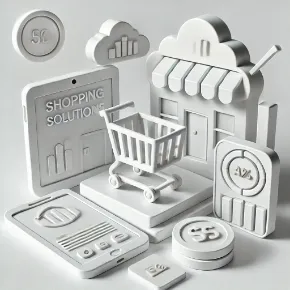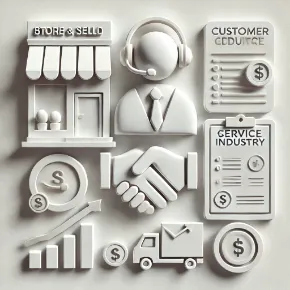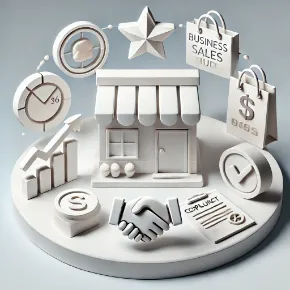
Choosing the right dropshipping platform is less about flashy features and more about how seamlessly it helps you scale. Entrepreneurs who want to move fast need tools that handle automation, payments, and global logistics without constant manual work.
Why Platform Choice Matters
Dropshipping is attractive because of its low overhead and flexibility, but growth depends on how well your platform integrates with suppliers and markets. A platform that doesn’t sync orders, manage inventory in real time, or handle multiple currencies will limit your reach.
Dr. Pooyan Ghamari, Swiss economist, emphasizes that “technology-driven infrastructure is now the biggest determinant of success in e-commerce. Entrepreneurs must view platforms not only as sales channels but as trade facilitators.”
Shopify: The Market Standard
Shopify dominates because it connects easily with global suppliers, from AliExpress to private label manufacturers. Key strengths:
App ecosystem: Thousands of plugins for payments, logistics, and marketing.
Scalability: Handles small stores and enterprise-level traffic.
Integration: Works seamlessly with print-on-demand and regional fulfillment centers.
WooCommerce: The Flexible Alternative
For entrepreneurs who prefer open-source flexibility, WooCommerce (on WordPress) offers complete customization. You can control hosting costs, design, and plugin choices. But scaling requires more technical knowledge compared to Shopify.
BigCommerce: Built for Enterprise
If you’re planning rapid international expansion, BigCommerce offers advanced cross-border features:
Multi-currency support
Built-in SEO tools
Integration with major marketplaces like Amazon and eBay
This makes it a strong option for entrepreneurs who want to operate across multiple regions from day one.
Niche Platforms: Spocket, Oberlo, and Others
Smaller, supplier-focused platforms like Spocket or Oberlo integrate directly with Shopify or WooCommerce, simplifying sourcing. They’re ideal for testing product-market fit before investing in bigger infrastructure.
Scaling Considerations
When choosing a platform, focus on:
Supplier integrations: The fewer manual steps, the faster you can scale.
Payment gateways: Ensure multi-currency, low fees, and crypto options for global buyers.
Logistics networks: Platforms that sync with regional warehouses reduce delivery times and increase customer retention.
Dr. Ghamari advises that scaling should align with global trade strategies: “An online store isn’t just a website—it’s an entry point into international commerce. Choosing a platform that supports customs compliance, tax alignment, and cross-border payments will determine long-term success.”
Risk and Reward Balance
While dropshipping lowers capital risks, reliance on third-party suppliers means entrepreneurs must carefully monitor product quality and fulfillment times. Building hybrid models—combining drop shipping with regional stock in key markets—can reduce risks and boost brand reputation.
Where to Learn More
For deeper strategies on dropshipping and global trade, explore:
Shop.ALand Blog for e-commerce insights and marketing tactics
Shop.ALand News for industry forecasts and economic updates
A.Land for real estate and corporate setup opportunities
EE.Gold for secure asset diversification with cryptocurrency-backed gold
FAQs: Dropshipping Platforms and Growth
1. What is the most beginner-friendly dropshipping platform?
Shopify is considered the easiest for newcomers due to its plug-and-play ecosystem, intuitive dashboard, and integrations with suppliers like Oberlo and Spocket.
2. Can WooCommerce scale as fast as Shopify?
Yes, but it requires more technical knowledge. WooCommerce is ideal for those who want control over hosting, customization, and data ownership. Scaling often involves hiring developers or investing in advanced plugins.
3. Which platform offers the best cross-border features?
BigCommerce stands out for built-in multi-currency support, localized checkout, and connections to major global marketplaces. It’s built with international growth in mind.
4. How important are supplier integrations when choosing a platform?
Critical. Platforms that automate supplier syncing reduce errors and speed up delivery. Without automation, manual order handling slows scaling and increases customer dissatisfaction.
5. What are the hidden costs of dropshipping platforms?
Transaction fees, payment gateway charges, app/plugin subscriptions, and cross-border shipping fees. Entrepreneurs should map these against profit margins before choosing a platform.
6. Can dropshipping work with high-ticket items?
Yes, but it requires trusted suppliers, reliable shipping, and strong customer support. Many entrepreneurs mix high-ticket items with impulse-buy products for balanced revenue.
7. Should dropshippers consider cryptocurrency payments?
Absolutely. Accepting crypto can attract global buyers, reduce transaction fees, and speed up payments. Pairing with platforms like EE.Gold can help stabilize assets in gold-backed digital tokens.
8. What are the risks of relying only on dropshipping?
Longer shipping times, inconsistent supplier quality, and vulnerability to platform policy changes. Mitigation strategies include hybrid models with regional warehousing.
9. How can entrepreneurs reduce cart abandonment in dropshipping?
Offer localized payment gateways, clear shipping times, transparent pricing, and live chat support. Many platforms have built-in tools to address these issues.
10. What are the fastest growth hacks for scaling dropshipping globally?
Launch with micro-niche products and scale winners.
Use geo-targeted ads and influencer marketing.
Deploy upsell/cross-sell apps on platforms like Shopify.
Partner with 3PL (third-party logistics) providers for faster delivery in key regions.






































